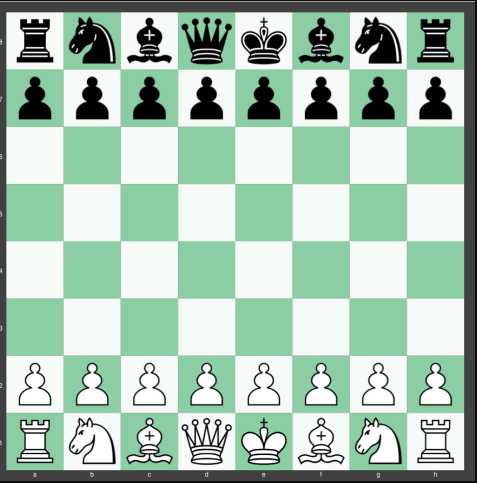Chess is the most popular board game in the world and the competition is intense. It may be just black and white checks on a table but it is a game that is said to sharpen your decision-making. Every move is calculated and a game of probability is laid out before players. Seems like something only a math whiz would do well? Don’t worry, in this guide to learn chess, we shall get you started on the game of chess.
Getting you started with some basics
It is good to start off this guide to learn chess by knowing that there are 16 pieces you can move around the chessboard. There are 6 types of pieces. Each type can move around the chessboard in different ways and it is essential to know how each pawn works. They are arranged the same way in the beginning and the two sides of the chessboard are black and white pieces. You choose one side when you are playing against someone. The player who pays white pieces always begins the game.
Also, it is important to know that the chessboard has a total of 64 squares. A chessboard is depicted as an 8×8 square that contains these squares for the pieces to move around. Each player must have a light square or white square at the bottom right.
What is Checkmate?
The idea of the game is to capture the other player’s king by moving around the pieces on the chessboard. When the king is in a position to be captured, it is known as “Check”. When the king is put into check and cannot get out of it, it means you’ve won the game and this is known as “checkmate.”
Learn about Chess Pieces
In this guide to learn chess, let’s set up the pieces on the chessboard:
Here is an illustration from chess.com which shows how the pieces are arranged on a chessboard at the beginning of a game.

Pawns
The identical-looking pieces in the top row of each side are called pawns/soldiers. They are unique since they can move only forward but can capture another piece only diagonally. They can move only one square at a time except for their first move which allows a player to move it two squares forward.
The Rook
The piece which resembles a castle at the bottom-most corners is called a rook or even elephant by some. This piece can move how many ever squares it wants but only forwards, backwards and sideways. These pieces tactically help protect the king when used together.
The Knight
The piece that resembles a horse is called the knight. The knight moves around the chessboard in a unique way because they are the only pieces that can move over pieces i.e., jump over. This piece moves two squares in one direction and then makes a 90 degree turn one square to form the shape “L”.
The Bishop
The piece next to the knight is known as the bishop. Bishop moves as far as it wants, but only diagonally and must stay on the colour of the square it starts on. For example, if the bishop starts on a white square, it can only move diagonally to another white square.
The Queen
This is the most powerful piece on the chessboard. The queen can move in any direction – forward, backwards, sideways and even diagonally, however far it wants. Losing the queen in a game is seen as a devastating blow.
The King
The least powerful, but the most valuable piece on the chessboard. Losing your king means you lose the game. The king can move only square but in any direction.
Special Chess Moves
In our earlier chess lessons, we had discussed how various pieces move in chess. Let’s now learn about the special chess moves-
Promotion
This is a special rule which allows a player to convert their pawn into any piece they want once it reaches the other side of the chessboard, the exceptions being a king or a pawn(obviously!). For example, if your pawn reaches the other side of the chessboard, you can convert it into a bishop, knight, rook or queen. This is not limited to only the captured pieces which means you can have two queens as well!
Castling
With this move, you can get your king to safety and your rook into the game, since it’s always stuck in a corner. So how you do this is by moving your king two squares(yes, two!) and then simultaneously moving your rook from one corner to the opposite, right next to the king!
It must be the first move of both your king and your rook and is thus allowed only once per game. There also must not be any pieces between the king and the rook to move and the king must not be in check.
En passant:
En passant means ‘in passing’ in French and is a move limited to pawns. If on your first move of a pawn it lands up to the side of an opponents pawn, the opponent has the option of capturing your pawn. The capturing is allowed because your pawn technically passed through a position to be captured. This option is available only immediately after a first pawn has moved out.
So the purpose of this game is to checkmate your opponent’s king. But not being careful can end up in an easy win for your opponent.
Interesting fact: If you get checkmated in just over two moves, it is called a fool’s mate!
You can play to win, but there is also the possibility of a draw. It means that when your king is not in check and you do not have any other pieces to move or any other legal moves, it ends as a draw. Also, if there aren’t enough pieces on the chessboard to force a checkmate, it is considered a draw. Another rare occurrence of a draw is when you have moved fifty consecutive times without capturing an opponent’s piece or moving a pawn.
Hope you enjoyed this guide to learn chess. So get started by learning the moves and checkmate your opponent through constant practice!
Share with your friends





